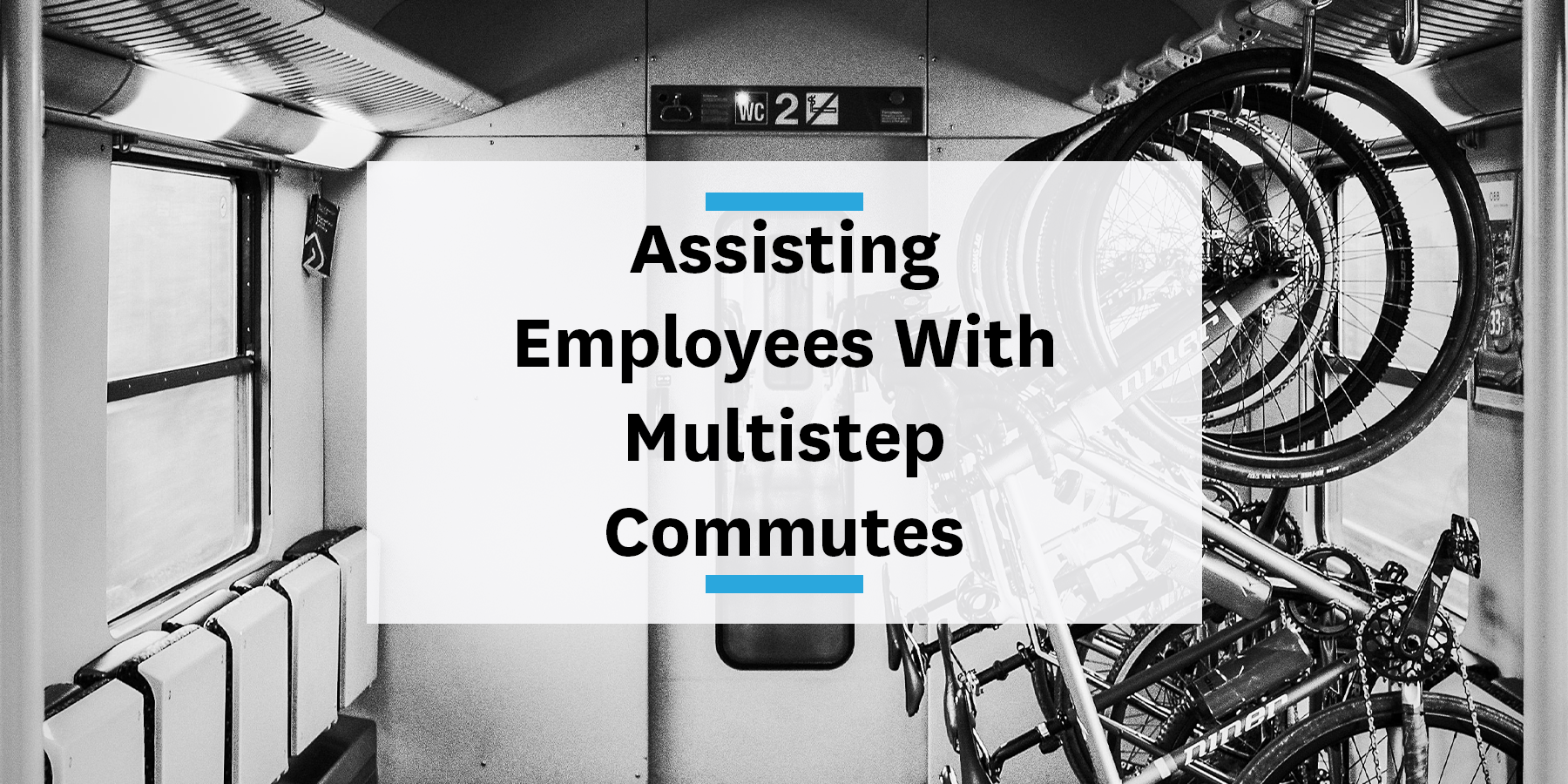As much as everyone would love to step out their front door, onto the metro, and right into their office, that commute almost never exists. Most people need to walk, drive, or scoot to the metro, then ride for 25 or more minutes, and then get to their office — AKA, multistep commutes.

Multimodal commutes are common for non-drivers. Sometimes it’s a mix of driving and busing, or walking and taking the metro or subway. Whatever the combination of travel, a multimodal commute adds another layer of stress to an already stressful situation. As the employer, it’s essential to make sure your employees have the support they need for these commutes.
Membership has its perks
Providing transit passes is the perfect place to start! We don’t mean you have to be fully subsidizing each employee’s pass, but the employees who regularly take the metro or bus should have some help.
For employees who live close enough to work to bike, or need to finish their commutes but aren’t close enough to walk, bikesharing is perfect. Most bikeshare providers offer corporate memberships for companies. These memberships can be fully or partially subsidized, but they allow employees to make the first or last mile of their commutes shorter.
If subsidized memberships and transit passes aren’t enough, you can get creative. You can provide a shoe stipend for employees who have to walk a bit during their commute! We all know nothing is worse than walking in an uncomfortable pair of shoes, especially if the closest bus stop is more than a few blocks. Helping employees buy a pair of comfortable commuting shoes can lead to a world of change.
Straight cash-out
For a lot of companies, free parking is a major perk. We get it — having a car at work makes it easier to come and go if life happens. But driving and traffic can actually lead to longer commutes, especially for commuters entering and exiting cities at rush hour.
To give employees more incentives and financial benefits, you can implement a parking cash-out program. This is exactly what it sounds like: Rather than paying for a parking spot for your employees to use free of charge to them, you pay them a partial or full amount of the parking spot. All they have to do is not drive to work. It’s a win-win-win for you, your employees, and all other commuters, because you’re taking more cars off the road.
Communication is key
When employees do have multimodal commutes, it’s important to keep a constant and open line of communication. You need to know which transit and mobility options your employees are using so you’re offering useful benefits. Conducting quarterly or biannual surveys can help make sure your benefits are up to date.
Your onboarding process is a perfect time to communicate the commuter benefits you offer. Starting a new job is tough enough! Starting a new commute adds stress to the situation – especially if employees need to take more than one method of transit. Helping new employees before they start or on their first day to figure out their best commute can lead to a successful tenure, and good habits from the get-go.
Hub it out
Don’t worry, you’re not alone when it comes to multimodal commutes. Cities are not implementing mobility hubs to make getting to and from transit stops even easier.
If you’re not familiar with mobility hubs, here’s a quick refresher: They are areas, usually centered around transit stops, with bike racks, scooter parking, and usually a few parking spaces for cars. The goal is to help commuters with the first and last mile of their commutes.While cities are making transit stops more accessible, you can do the same for your office. Bikeshare companies allow companies and buildings to request docks at or close to their office. You can also install bike racks at your office to make biking to work that much easier. Anything you can do as an employer to make your employees commutes easier can lead to a better employee experience and higher retention.




